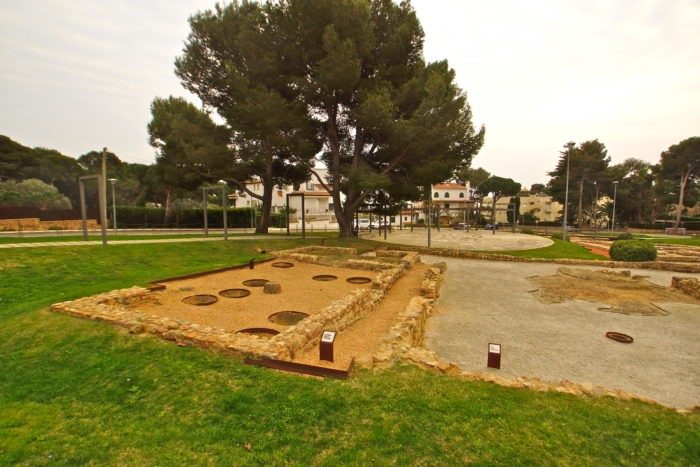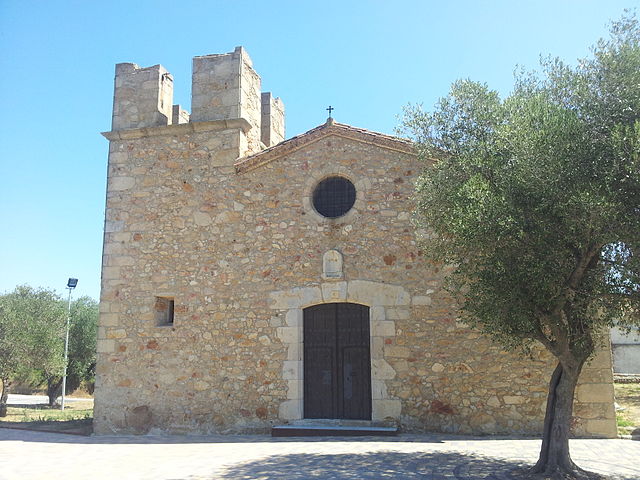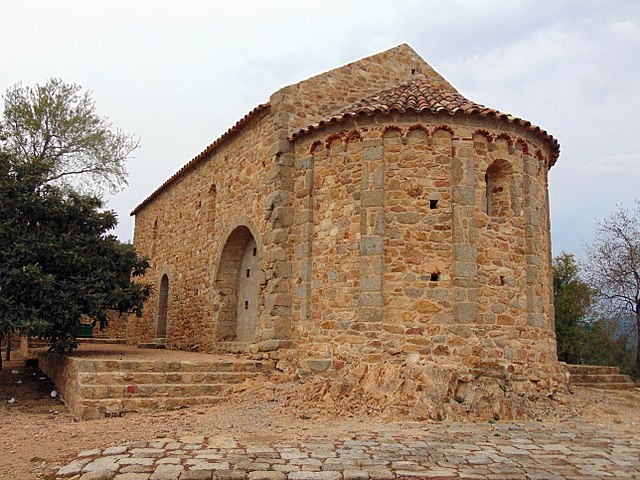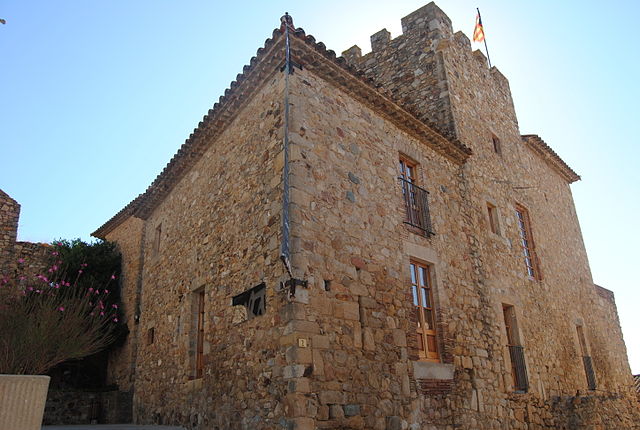While lazy days on the beach are great for restoring mind and body, you don’t need to go far to step into Platja d’Aro’s past.
The Romans once occupied parts of the Costa Brava and in Platja d’Aro you can find the ruins of a villa from that period. And while the parish church of Santa Maria de Platja d’Aro dates only from the mid 20th century, the church which is from the middle ages.
A few kilometres inland is Castell d’Aro, with its medieval castle built to protect the area from pirates. Adjoining the castle is an old church. And as far as museums go, there is one devoted to dolls in Castell d’Aro, with more than 800 examples from all over the world.
Roman ruins
Just off the road towards Sant Antoni de Calonge, near Cala Rovira, you’ll find the ruins of a Roman villa.

The ruins of the Roman villa in Platja d’Aro. Photo by Flamenc.
Unfortunately a large part of the originally unearthed ruins were destroyed in the 1950s as the tourism-fuelled construction boom began in earnest. They are buried beneath Caleta Palace and Xaloc hotels.
However in the late 1980s the villa of Pla de Palol was uncovered next to Hotel Xaloc.
The area surrounding the villa was used for wine and agriculture as well as providing clay for ceramics. Goods were then transported by sea from the nearby natural harbour of Cala Rovira.
The ruins are found in a square and publicly accessible. Grass separates the ruins, which date from the sixth century AD, and there is a circular area with seating and some shade.
Platja d’Aro’s parish churches
Near the town centre of Platja d’Aro is the current parish church of Santa Maria de Platja d’Aro. It was built between 1953 and 1959 with a circular bell tower.

Església de Santa Maria de Fenals de Baix. Photo by Deosringas.
More interesting from a historical perspective is the old church it replaced. Santa Maria de Fenals d’Aro (or Santa Maria de Fenals de Baix, to differentiate it from the church it replaced) is located in the Fanals neighbourhood, right next to the C-31. The existing structure is a late 18th century with an unfinished bell tower.

Església de Santa Maria de Fenals d’Amunt. Photo by Josep Maria Viñolas Esteva.
Further out of town is an even older church, Santa Maria de Fenals d’Amunt. This Romanesque church dates from the 10th century and was used until 1749 when Santa Maria de Fenals de Baix replaced it.
Castell d’Aro
Just three kilometres inland from Platja d’Aro you’ll find a village with a church standing tall on a small hill. This is the mediaeval village of Castell d’Aro.
The two towns form the municipality of Castell-Plaja d’Aro but while the tourist resort dwarfs this village, that wasn’t always the case. In 1962 the tiny fishing village known as Fanals de Aro was renamed Playa de Aro in order to position it better for tourism. Around the same time the municipal council offices moved from Castell d’Aro.
This was the early days of the tourist boom and the name change reflected the long sandy beach for which the town is now famous.
Playa de Aro simply means Aro Beach in Castilian Spanish. Spain was then under the Franco dictatorship who banned the use of Catalan. These days the town is named Platja d’Aro, in Catalan.
But while the fishing village disappeared as tourist apartments and hotels went up, Castell d’Aro remains surprisingly untouched. Once you arrive in the village, head for the church in the nucleus of the village. Although you can still drive, you might prefer to do it on foot. It’s not far.
Follow the narrow streets lined with old stone houses until you a small square. Here you’ll find a Gothic church and a small castle – the castell that gives the town its name.

Benedormiens castle in Castell d’Aro. Photo by Wikiaps.
The Castle of Benedormiens, to give it its full name, was built to protect the valley from pirate attacks, which were once commonplace. Parts date from the 12th century but it has been considerably extended, renovated and otherwise altered over the years. It has been damaged by fire and, in 1879, by an accidental explosion.
The castle has been protected as a Cultural Asset of National Interest since 1995 and is used as an exhibition venue by the local council.
Next to the castle is the church of Santa Maria, which is typical of the late Gothic period and has a baroque facade. Although the current church dates from the 16th century, a church on this site was first documented in 1018.
Museu de la Nina de Castell d’Aro
Still in Castell d’Aro, located between the castle and Plaça Lluis Companys, you’ll find an extensive Doll Museum.
Note that the Doll Museum is currently closed for refurbishment.
It was founded in 1997 with dolls from a private collection. However the collection has increased in size to more than 800 over the years as new dolls have been donated.
The ground floor is set aside for dolls from around the world made from a variety of different materials and construction techniques. Here you’ll see a collection of 254 hand crocheted dolls as well as special edition dolls by Barbie and D’Antón.
Upstairs a collection of antique dolls is displayed from the 19th and early 20th centuries. Here you can see how dolls evolved over this time as well as see the manufacturing methods used.
Opening times: closed until further notice

